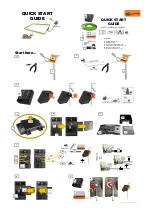
Type of current, mains
voltage and mains fre-
quency
Figure 9: Name plate (example)
[1]
Type of current
[2]
Mains voltage
[3]
Mains frequency (for 1-phase AC motors)
Type of current, mains voltage and mains frequency must match the data on the
motor name plate.
Cable installation in ac-
cordance with EMC
Signal and fieldbus cables are susceptible to interference. Motor cables are
interference sources.
●
Lay cables being susceptible to interference or sources of interference at the
highest possible distance from each other.
●
The interference immunity of signal and fieldbus cables increases if the cables
are laid close to the earth potential.
●
If possible, avoid laying long cables and make sure that they are installed in
areas being subject to low interference.
●
Avoid parallel paths with little cable distance of cables being either susceptible
to interference or interference sources.
Connecting cables
Cable glands
Reductions
Blanking plug
●
We recommend using connecting cables and connecting terminals according
to rated current (I
N
) (refer to motor or electrical data sheet).
●
For device insulation, appropriate (voltage-proof) cables must be used. Specify
cables for the highest occurring rated voltage.
●
It is advised to use a shielded cable.
●
For connecting cables exposed to UV radiation (outdoor installation), use UV
resistant cables.
●
The cross-sectional area of every protective earthing conductor which does not
form not part of the supply cable or the cable enclosure, shall, in any case, not
be less than:
-
For mechanical protection: minimum 2.5 mm²
-
Without mechanical protection: minimum 4 mm²
●
For the connection of position transmitters, screened cables must be used.
Fieldbus cable
Only cables complying with IEC 61158 or IEC 61784, cable type A, may be used for
Profibus DP wiring.
14
SGM 04.1 – SGM 14.1 / SGMR 04.1 – SGMR 14.1
Electrical connection
Profibus DP















































